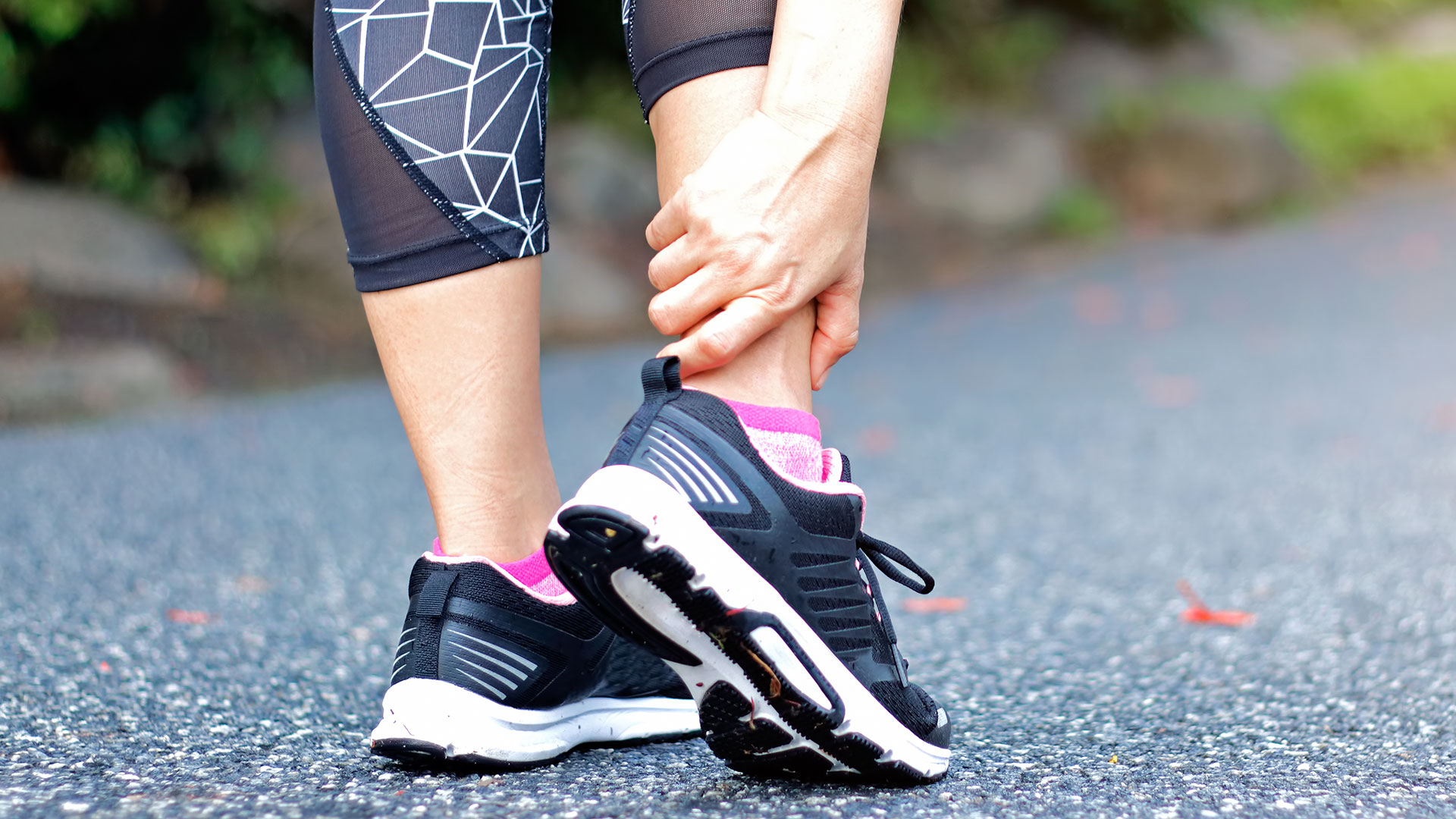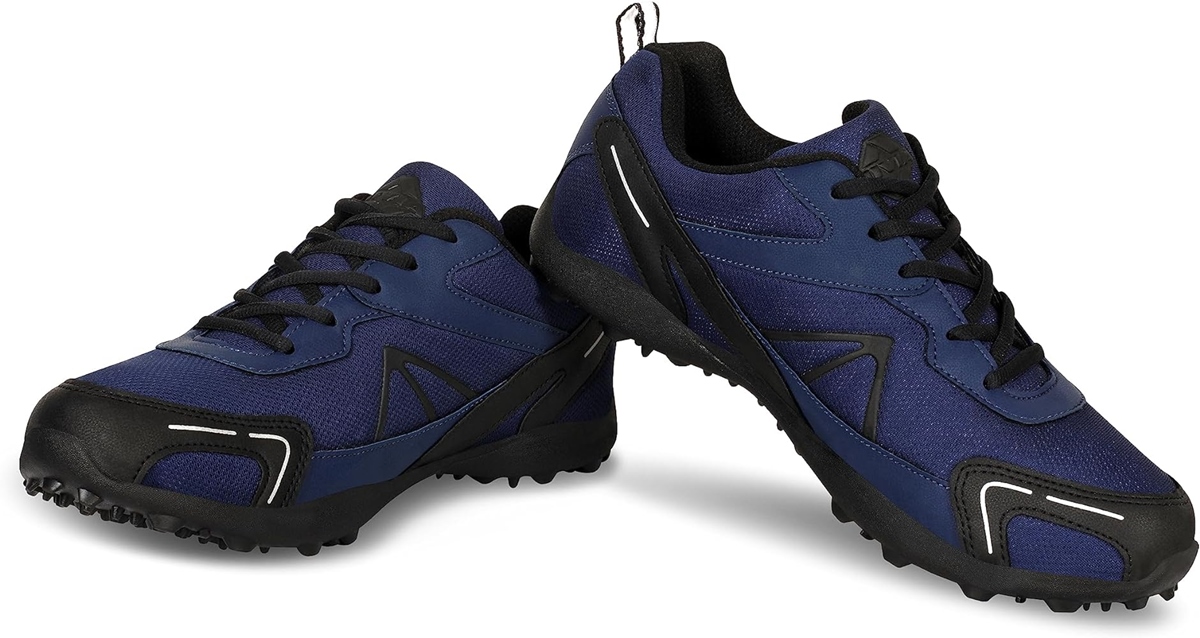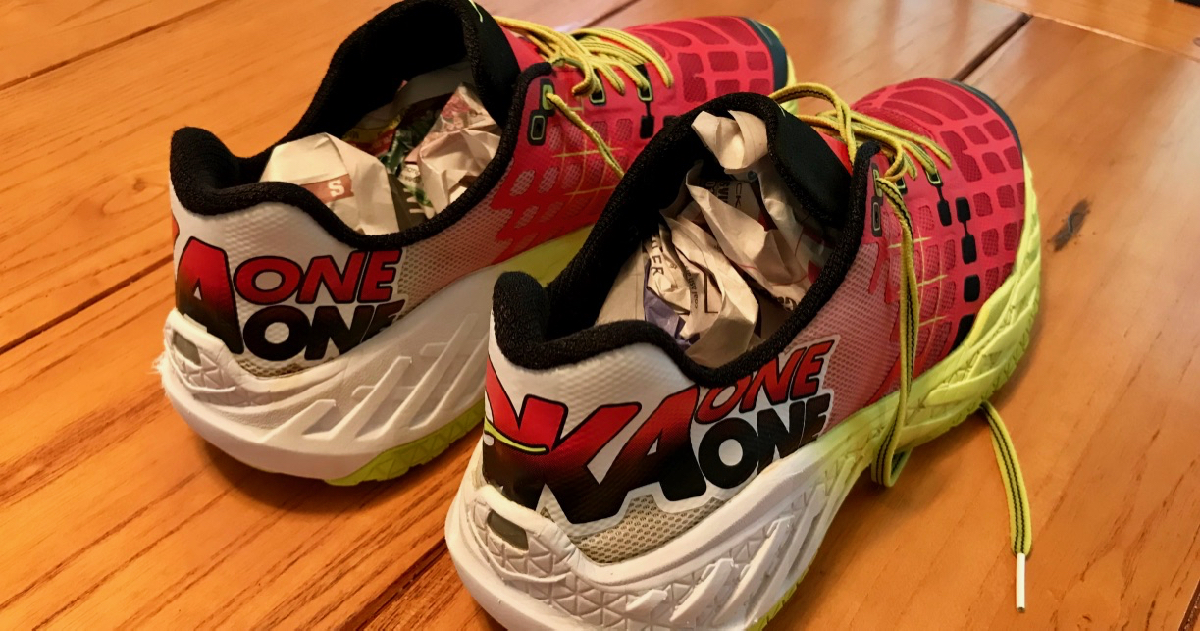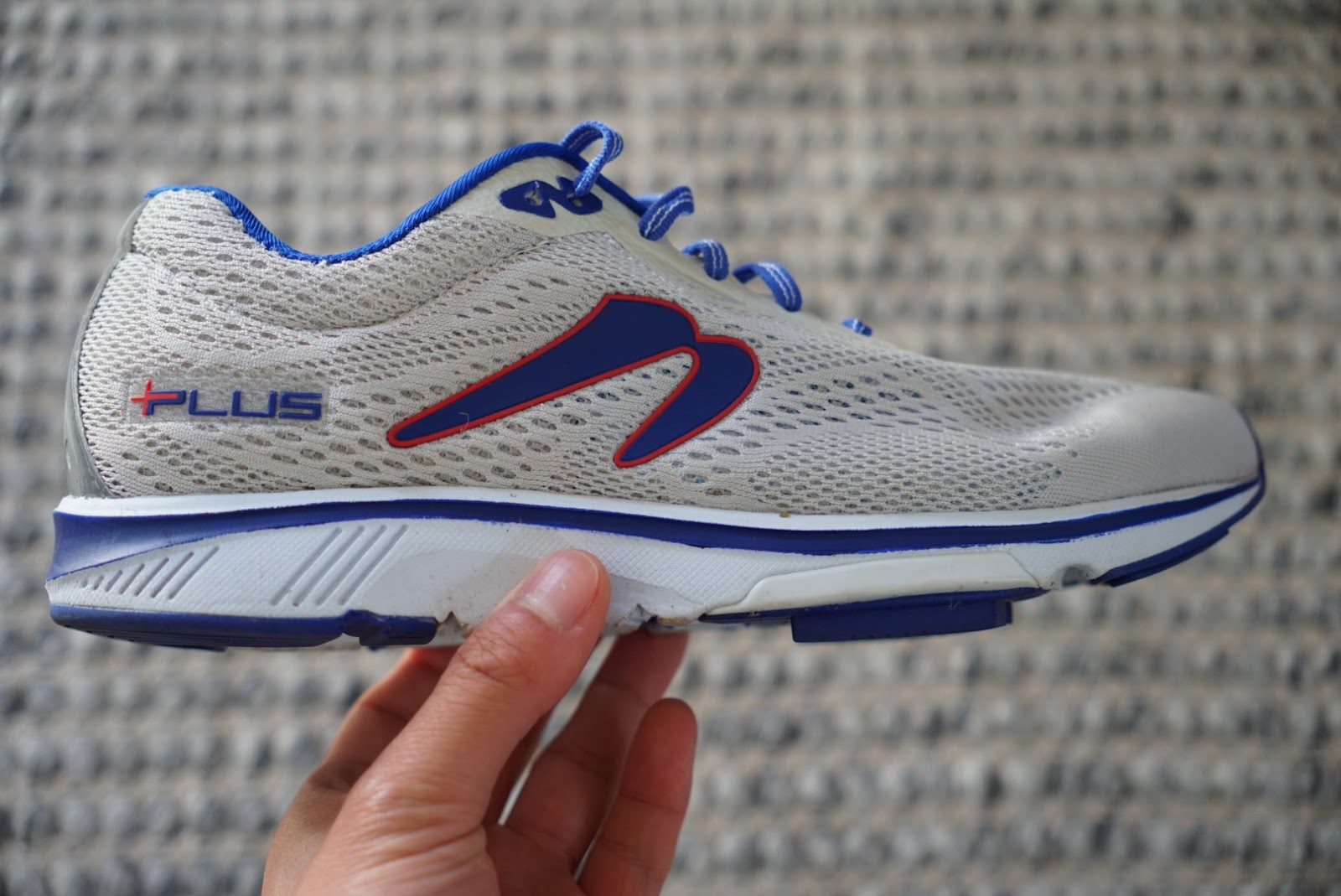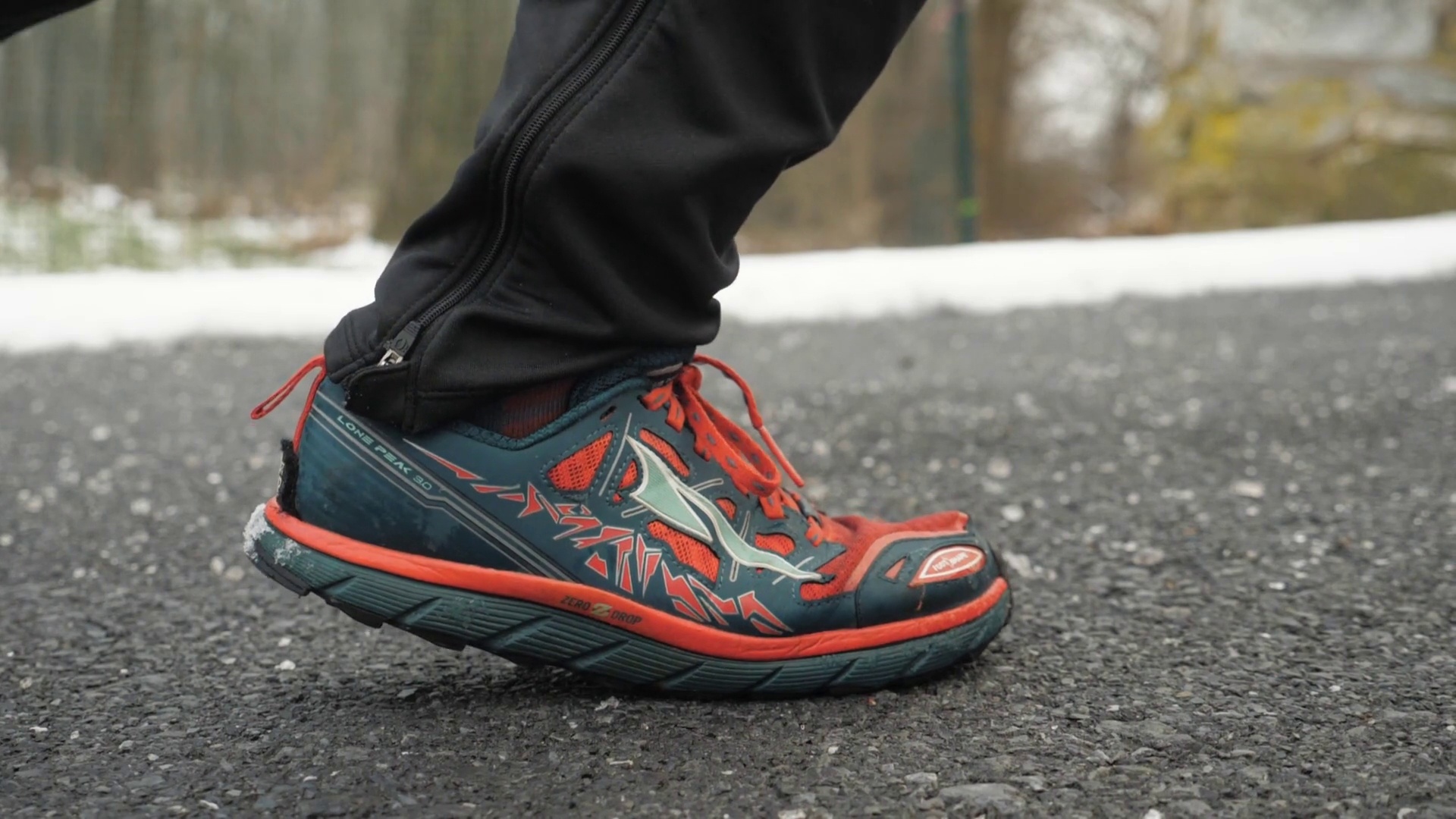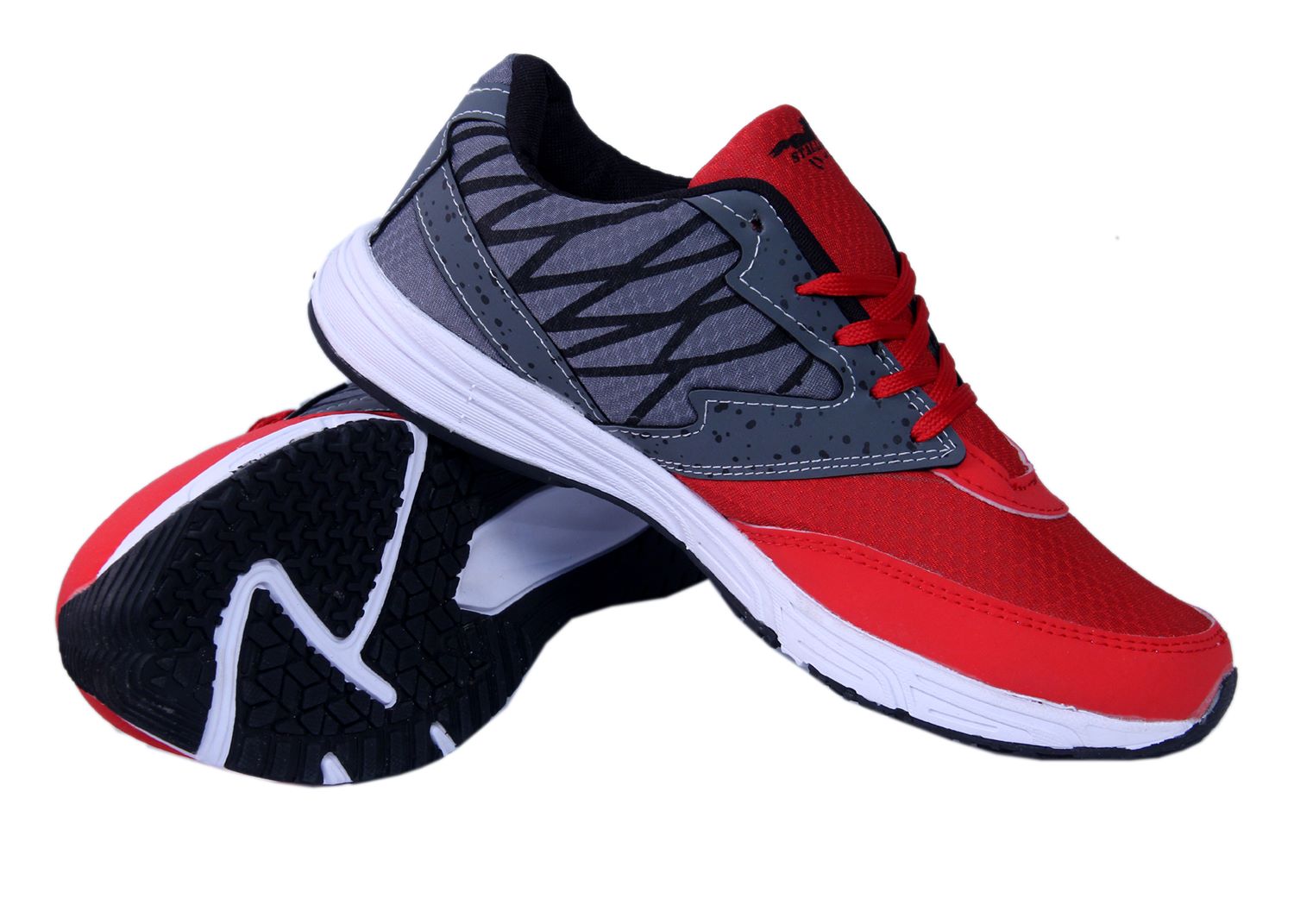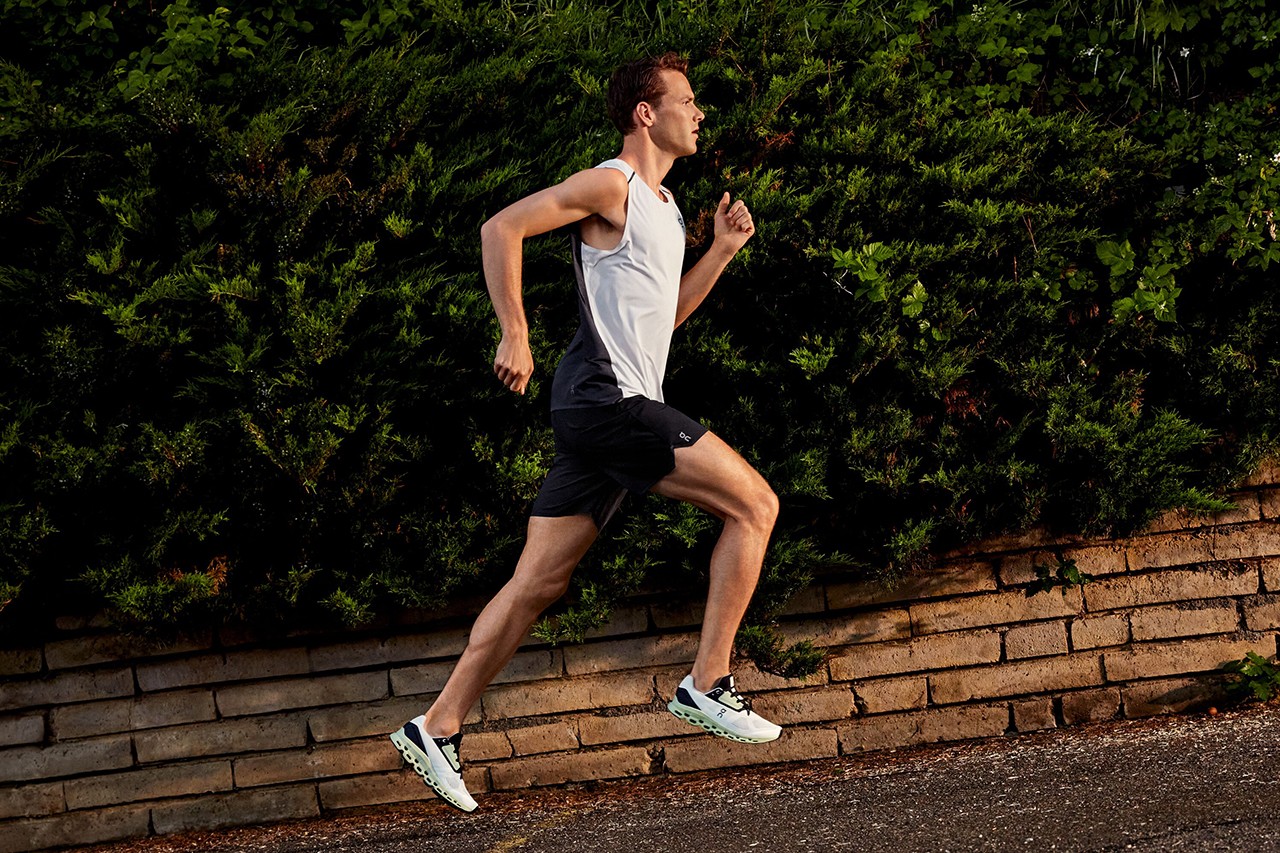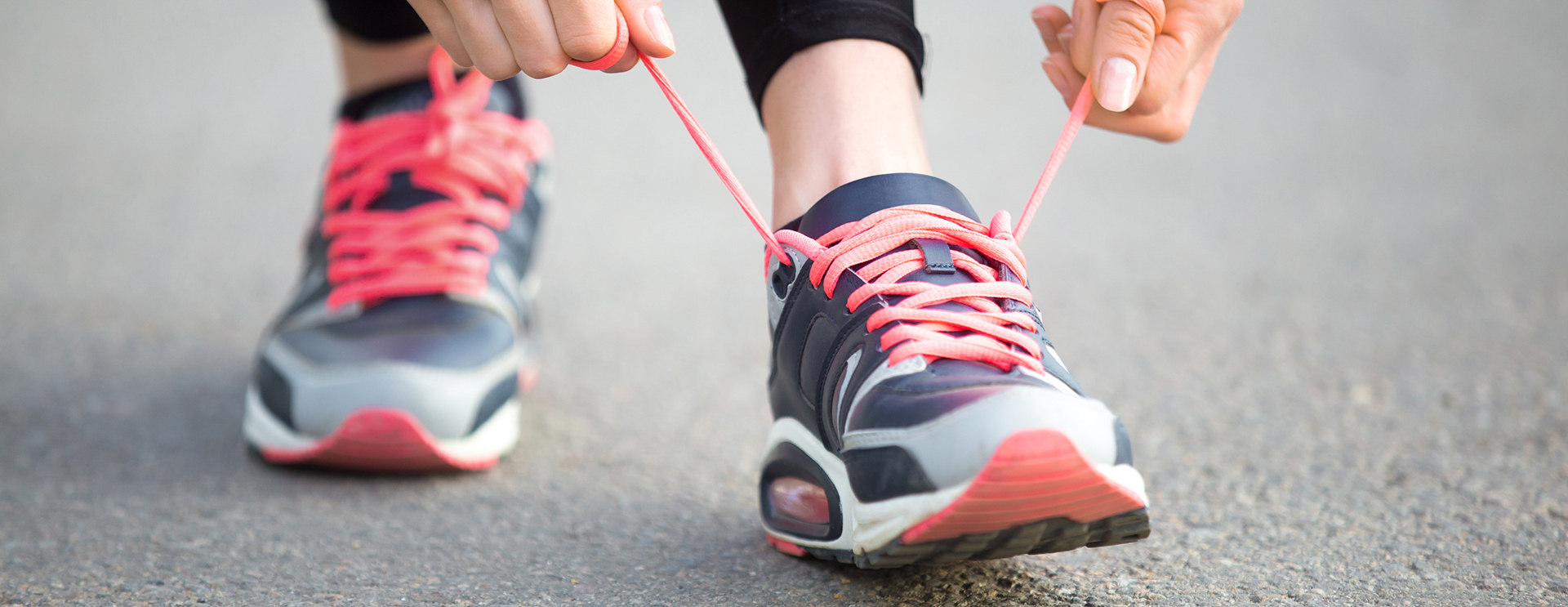

Featured
Why Do My Running Shoes Hurt My Feet
Modified: March 22, 2024
Discover why your running shoes are causing discomfort and learn how to find the perfect pair for pain-free workouts. Featured tips and advice for foot comfort.
Introduction
Are you an avid runner who experiences foot pain every time you lace up your running shoes? If so, you’re not alone. Many runners struggle with discomfort and pain in their feet while running, which can significantly impact their performance and overall enjoyment.
Understanding why your running shoes hurt your feet is crucial in finding a solution and preventing further injury. In this article, we will explore the common causes of foot pain from running shoes and provide tips on how to alleviate discomfort and find the right pair of shoes for your needs.
As runners, we put our feet through a lot of stress and impact. This repetitive motion can lead to various foot issues, ranging from blisters and calluses to more severe conditions like plantar fasciitis or stress fractures. While foot pain may sometimes be unavoidable, it is crucial to determine whether your running shoes are exacerbating the problem.
Your running shoes play a vital role in providing support, cushioning, and stability during your runs. However, if they are not properly fitted or lack adequate cushioning and support, they can contribute to foot pain. Additionally, factors such as overpronation, supination, and improper running form can also put strain on your feet and lead to discomfort.
In the following sections, we will delve deeper into these potential causes of foot pain from running shoes and provide valuable tips on how to address them. By understanding your foot type, choosing the right shoes, and practicing proper foot care, you can reduce the chances of foot pain and enjoy the benefits of running without unnecessary discomfort.
Understanding Foot Pain
Foot pain is a common problem experienced by runners and can significantly impact their performance and enjoyment. To effectively address foot pain caused by running shoes, it is essential to have a basic understanding of the structure of the feet and the factors that can contribute to discomfort.
The foot is a complex structure composed of bones, muscles, ligaments, and tendons, all working together to support the body’s weight and facilitate movement. When running, the feet endure repetitive impact and stress, which can lead to various types of foot pain.
Foot pain can manifest in different areas, including the heel, arch, ball of the foot, or toes. It can range from a dull ache or soreness to sharp, intense pain. The specific location and sensation of the pain can provide valuable clues as to the underlying cause.
Common causes of foot pain from running shoes include incorrect shoe size or fit, lack of cushioning or support, overpronation or supination, and improper running form. These factors can put excessive strain on the feet, leading to discomfort and potential injuries.
It is important to differentiate between acute and chronic foot pain. Acute pain is usually short-lived and often occurs due to sudden trauma or injury, such as stepping on a sharp object. Chronic foot pain, on the other hand, persists over an extended period and is often indicative of an underlying condition or repetitive strain.
In the following sections, we will examine the common causes of foot pain from running shoes in more detail and offer practical solutions to address and prevent such pain. By identifying the root cause of the discomfort and implementing proper footwear and foot care practices, you can minimize foot pain and improve your overall running experience.
Common Causes of Foot Pain from Running Shoes
When it comes to foot pain caused by running shoes, several factors can contribute to discomfort. Understanding these common causes can help you identify the root of your foot pain and take appropriate measures to alleviate it.
1. Incorrect Shoe Size or Fit: One of the primary culprits of foot pain is wearing running shoes that are either too small or too big for your feet. Tight-fitting shoes can lead to blisters, corns, and pressure points, while loose-fitting shoes can cause your feet to slide and result in friction and instability.
2. Lack of Cushioning or Support: Running shoes with inadequate cushioning or support can also cause foot pain. When your shoes lack proper cushioning, the impact of each step is absorbed by your feet, leading to discomfort and even injuries like stress fractures. Similarly, insufficient support can result in overpronation or supination, straining the arches and causing pain.
3. Overpronation or Supination: Overpronation and supination are common foot conditions that can contribute to foot pain. Overpronation occurs when the feet roll excessively inward while running, leading to strain on the arches and ankles. Supination, on the other hand, happens when the feet roll outward, putting pressure on the outer edges of the feet. Both conditions can cause discomfort and increase the risk of injuries.
4. Improper Running Form: Your running technique can have a significant impact on foot pain. Poor running form, such as overstriding or landing heavily on your heels, can increase the stress placed on your feet. This can result in foot pain and injuries like plantar fasciitis or Achilles tendonitis.
Identifying the specific cause of your foot pain from running shoes is essential in finding the appropriate solutions. In the next sections, we will explore various strategies to address these common causes and ensure a comfortable and injury-free running experience.
Incorrect Shoe Size or Fit
Wearing running shoes that are either too small or too big can be a significant cause of foot pain. Ill-fitting shoes can lead to a range of problems, including blisters, corns, pressure points, and overall discomfort.
When it comes to choosing the right shoe size, it is crucial to have your feet measured regularly. Factors such as age, weight changes, and pregnancy can affect the size and shape of your feet. Remember to measure both feet, as they may have slight differences in size.
Ensure that there is enough space in the toe box area of the shoe. Your toes should have some wiggle room and should not feel cramped or squeezed together. At the same time, the shoe should not be excessively loose or allow your feet to slide around inside.
When trying on running shoes, it is advisable to wear the same type of socks that you would normally use for running. This will give you a more accurate idea of the fit and feel of the shoes. Walk or jog around the store to assess the comfort and stability of the shoes before making a purchase.
It’s also essential to consider the width of the shoe. Some people may have wider or narrower feet than the standard shoe width. In such cases, opting for shoes that come in different width options can help ensure a more precise fit and alleviate foot pain.
Another factor to consider is the lacing technique. Properly lacing your shoes can help alleviate pressure points and provide a more secure fit. Experiment with different lacing methods, such as the heel lock technique or skipping certain eyelets, to find the most comfortable option for your feet.
If you are unsure about finding the right shoe size or fit, consider getting a professional shoe fitting. Specialist running stores often have knowledgeable staff who can analyze your feet, identify any specific needs or conditions, and recommend suitable shoe options.
Remember that everyone’s feet are unique. What works for someone else may not work for you. Take the time to try on different brands, models, and sizes of running shoes until you find the perfect fit for your feet.
By ensuring that you have the correct shoe size and fit, you can minimize foot pain and discomfort while maximizing your running performance.
Lack of Cushioning or Support
The level of cushioning and support provided by your running shoes is crucial in preventing foot pain and promoting comfort during your runs. Insufficient cushioning or lack of proper support can lead to discomfort and increase the risk of injuries.
When choosing running shoes, pay attention to the midsole, which is responsible for providing cushioning and support. The midsole material should be soft and responsive, absorbing shock and reducing the impact on your feet. Common midsole materials include EVA (ethylene-vinyl acetate) foam and polyurethane foam.
If you have a higher body weight or find that your current shoes do not provide sufficient cushioning, consider opting for shoes with additional cushioning features. Many brands offer shoes with extra padding or gel inserts in the heel or forefoot areas to enhance shock absorption and improve comfort.
Support is another crucial aspect to consider. Different feet have different arch types: high arches, normal arches, or low arches (flat feet). Understanding your foot’s arch type can help you choose running shoes with the appropriate level of support.
If you have high arches, look for shoes with a cushioned and flexible midsole to provide shock absorption and allow for natural foot movement. For those with low arches or flat feet, shoes with good arch support and stability features can help distribute weight evenly and prevent overpronation.
Many running shoe models are designed specifically for different types of pronation, providing support and stability where needed. Overpronators may benefit from shoes with stability features like medial posts or dual-density midsoles, while neutral runners can opt for shoes with a more cushioned and flexible design.
It’s important to note that too much cushioning or support can also be problematic. Each runner has individual needs and preferences, so finding the right balance is essential. Take into account factors such as your running style, foot strike pattern, and running surface when selecting the appropriate level of cushioning and support.
Regularly replacing your running shoes is also crucial for maintaining adequate cushioning and support. Over time, the midsole of the shoes will compress and lose its shock-absorbing properties. As a general guideline, consider replacing your shoes every 300-500 miles or when you notice significant wear and tear.
By choosing running shoes with proper cushioning and support, tailored to your specific foot type and running style, you can minimize foot pain and provide a comfortable foundation for your runs.
Overpronation or Supination
Overpronation and supination are common foot conditions that can contribute to foot pain, especially when wearing improper running shoes. Understanding these conditions and their impact on your feet can help you address and alleviate any discomfort.
Overpronation occurs when the feet roll excessively inward while running. This can lead to an imbalance in weight distribution and put stress on the arches and ankles. Over time, overpronation can lead to various foot issues, such as plantar fasciitis, shin splints, and IT band syndrome.
Supination, on the other hand, involves the feet rolling outward. This can result in increased pressure on the outer edges of the feet and reduced shock absorption. Supination can lead to issues like ankle sprains, stress fractures, and Achilles tendonitis.
To determine if you have overpronation or supination, observe the wear pattern on your old running shoes. Overpronators tend to have more wear on the inside edge of the shoe, while supinators have more wear on the outside edge.
If you have overpronation or supination, it is essential to choose running shoes that provide the appropriate level of support and stability to correct your foot’s natural motion.
For overpronators, look for shoes with stability features, such as medial posts or dual-density midsoles. These features help control excessive inward rolling and provide support to the arches. Opting for shoes with a firm heel counter can also enhance stability and prevent overpronation.
If you are a supinator, you will benefit from running shoes with good shock absorption to compensate for the reduced natural cushioning. Look for shoes with ample cushioning throughout the midsole and extra padding in the forefoot area. Lightweight and flexible shoes can also help promote a more natural foot motion.
It’s important to note that some runners may have a neutral foot pronation, meaning their feet maintain a balanced alignment. For neutral runners, shoes with a balanced combination of cushioning and support can provide the necessary comfort and protection.
If you are unsure about your foot pronation or the appropriate shoes for your needs, consider visiting a running specialty store or consulting with a podiatrist. They can analyze your gait and recommend the most suitable running shoes for your foot type.
By addressing and correcting overpronation or supination through proper running shoes, you can minimize foot pain and reduce the risk of injuries associated with these conditions.
Improper Running Form
Running form plays a crucial role in preventing foot pain and promoting a smooth and efficient running technique. Poor running form can put unnecessary strain on your feet and lead to discomfort and potential injuries.
Common issues with running form include overstriding, landing heavily on the heel, or running with a hunched posture. These practices can increase the impact and stress placed on your feet, leading to foot pain and potential problems like plantar fasciitis, Achilles tendonitis, or shin splints.
To improve your running form and reduce foot pain, consider the following tips:
- Focus on Cadence: Aim to maintain a higher cadence, which refers to the number of steps you take per minute. Aiming for a cadence of around 180 steps per minute can help promote a shorter stride length, reducing the impact on your feet.
- Land Midfoot: Instead of landing heavily on your heel, focus on landing with a midfoot strike. This allows for a more even distribution of impact and reduces the strain on your feet.
- Maintain Good Posture: Keep your head up, shoulders relaxed, and core engaged while running. This helps maintain proper alignment and reduces unnecessary stress on your feet and lower limbs.
- Engage Your Core: By strengthening your core muscles, you can improve your stability and overall running form. A strong core helps maintain proper posture and reduces excessive movement or compensatory actions that can strain your feet.
- Gradually Increase Mileage and Intensity: Avoid sudden increases in mileage or intensity, as this can put excessive strain on your feet. Instead, progress gradually to give your body time to adapt and strengthen the necessary muscles.
It can be helpful to seek feedback on your running form from a knowledgeable coach or join a running group where you can learn from experienced runners. They can provide guidance and correct any form issues that may be contributing to your foot pain.
Additionally, incorporating strength and flexibility exercises into your training routine can also help improve your running form. Exercises that target the feet, ankles, calves, and hips can enhance stability, balance, and overall running mechanics.
Remember that everyone’s running form is unique, so it’s essential to find what works best for you. Listen to your body and make adjustments as needed to maintain a comfortable and efficient running technique that minimizes foot pain.
Identifying Your Foot Type
Understanding your foot type is crucial in selecting the appropriate running shoes that provide the necessary support and stability for your feet. There are three main types of foot arches: high arches, normal arches, and low arches (also known as flat feet).
High Arches: If you have high arches, your feet may have a more pronounced curve along the inner edge. High arches are commonly associated with supination, or rolling the foot outward. Runners with high arches may require running shoes with extra cushioning to absorb shock and reduce the risk of injuries.
Normal Arches: Having normal arches means your feet have a balanced curvature along the inner edge. Runners with normal arches are generally considered lucky, as they have a wider range of shoe options available. Stability shoes that offer moderate cushioning and support are often suitable for runners with normal arches.
Low Arches or Flat Feet: Flat feet have very little or no arch, resulting in more of the foot’s surface making contact with the ground. Runners with low arches may be prone to overpronation, or rolling the foot inward excessively. Stability or motion control shoes with proper arch support and cushioning are typically recommended for runners with flat feet.
It is worth noting that understanding your foot type is not a definitive measure of your running shoe needs. Other factors, such as your running style, body weight, and personal preferences, should also be taken into consideration.
An effective way to identify your foot type is to perform a wet test. Wet the soles of your feet, then stand on a surface that will leave a visible footprint, such as a piece of cardboard or a concrete floor. Examine the shape of the footprint to determine your arch type. A footprint with a deep, curved inward arch indicates high arches, while a completely flat footprint suggests low arches or flat feet. A moderately curved arch indicates a normal arch type.
Another option is to visit a running specialty store where experts can analyze your foot structure and walking or running gait. They may use tools like a pressure plate or video gait analysis to provide a more accurate assessment of your foot type and recommend suitable running shoes.
By identifying your foot type, you can narrow down your options and choose running shoes that provide the appropriate level of support and stability for your unique needs. This can help minimize foot pain, enhance comfort, and improve your overall running performance.
Tips for Finding the Right Running Shoes
Choosing the right running shoes is essential in preventing foot pain and optimizing your performance. Here are some helpful tips to guide you in finding the perfect pair:
- Know Your Foot Type: Understand your foot type – whether you have high arches, normal arches, or low arches (flat feet). This will help determine the level of support and cushioning you need in your running shoes.
- Get a Professional Shoe Fitting: Visit a running specialty store for a professional shoe fitting. Knowledgeable staff can assess your gait, foot structure, and specific needs to recommend the right shoes for you.
- Try on Different Brands and Models: Don’t limit yourself to a particular brand or model. Try on a variety of running shoes to find the one that feels the most comfortable and supportive for your feet.
- Consider Your Running Style: Take into account your running style and preferences. If you prefer a more minimalistic shoe, look for lightweight options with less cushioning. If you need additional stability or support, consider shoes specifically designed for that purpose.
- Use Orthotic Inserts if Needed: If you have specific foot conditions or require additional support, talk to a podiatrist about orthotic inserts. These custom-made inserts can be placed inside your running shoes to provide personalized support.
- Check for Proper Fit: Ensure that your running shoes fit well. Look for a thumb’s width of space between your longest toe and the end of the shoe. Also, check that your heel is secure and doesn’t slip while running.
- Consider Terrain and Running Surface: If you frequently run on trails or uneven terrain, consider trail running shoes that offer increased traction and stability. For road running, look for shoes that provide responsive cushioning and durability.
- Replace Regularly: Keep track of your shoes’ mileage and replace them when they show signs of wear. Generally, running shoes should be replaced every 300-500 miles or every 6-8 months, depending on your running frequency and intensity.
Remember, finding the right running shoes is a personal process. What works for someone else may not work for you. Listen to your body, prioritize comfort and support, and don’t be afraid to try different options until you find the perfect fit for your feet.
Getting a Professional Shoe Fitting
When it comes to finding the right running shoes, getting a professional shoe fitting can make a significant difference. A professional fitting can provide valuable insights into your foot structure, running gait, and specific needs, ensuring that you select the most appropriate shoes for your feet.
Here are the benefits of getting a professional shoe fitting:
- Expert Guidance: Professionals at running specialty stores have extensive knowledge about different running shoe brands, models, and features. They can analyze your feet, take into account your running style, and recommend the most suitable shoes based on your individual needs.
- Gait Analysis: During a professional shoe fitting, experts may assess your gait – the way you walk or run. By observing your foot strike, stride length, and overall movement, they can identify any running imbalances or issues that may be contributing to foot pain. This analysis helps in choosing shoes with the appropriate level of support and stability.
- Customized Recommendations: A professional fitting takes into account your foot type, any specific foot conditions or concerns, and your running goals. This personalized approach ensures that the recommended shoes are tailored to your unique requirements.
- Try Before You Buy: One of the advantages of a professional fitting is the ability to try on different shoes and test them out before making a purchase. This allows you to feel the fit, comfort, and support of the shoes while walking or even running in the store.
- Additional Accessories: In addition to providing shoe recommendations, professionals may also suggest other accessories that can enhance your running experience, such as insoles, compression socks, or specific lacing techniques.
When visiting a running specialty store for a fitting, it can be helpful to bring along your current running shoes. This gives the experts the opportunity to observe the wear pattern and gain insights into how your current shoes are affecting your feet.
Remember that a professional fitting is not a one-time event. Your feet and running needs may change over time, so it’s beneficial to periodically revisit the store for reassessment and potential updates to your shoe selection.
Investing in a professional shoe fitting can save you time, money, and potential discomfort. By relying on the expertise of professionals, you can have confidence that you are choosing the right running shoes to support your feet and enhance your overall running performance.
Proper Foot Care and Injury Prevention
In addition to finding the right running shoes, taking proper care of your feet is essential in preventing foot pain and injuries. Incorporating foot care practices into your routine can help maintain the health of your feet and keep you running comfortably.
Here are some tips for proper foot care and injury prevention:
- Maintain Good Hygiene: Keep your feet clean and dry to prevent bacterial or fungal infections. Wash your feet regularly with mild soap and warm water, and dry them thoroughly, especially between the toes.
- Trim Your Toenails: Trim your toenails regularly to prevent ingrown toenails and discomfort. Cut them straight across and avoid cutting them too short to reduce the risk of ingrown nails.
- Wear Moisture-Wicking Socks: Moisture-wicking socks can help keep your feet dry, reducing the likelihood of blisters and fungal infections. Avoid cotton socks, as they tend to retain moisture.
- Use Proper Running Techniques: Implement good running form and techniques to minimize strain on your feet. Maintain a consistent stride length, practice proper foot strike, and engage your core muscles for stability.
- Warm-Up and Stretch: Prior to running, warm up with dynamic stretches to increase blood flow to your muscles. After your run, cool down and perform static stretches to improve flexibility and prevent tightness.
- Gradually Increase Intensity: Avoid sudden increases in mileage or intensity, as this can lead to overuse injuries. Gradually increase the duration, distance, or intensity of your runs to allow your body to adapt and build strength.
- Listen to Your Body: Pay attention to any pain or discomfort in your feet. If you experience persistent or worsening pain, it’s crucial to rest, seek medical advice if necessary, and address the issue promptly.
- Rotate Your Running Shoes: It’s beneficial to have multiple pairs of running shoes and rotate them. This allows the shoes to fully dry out between runs, reducing the risk of bacterial or fungal growth.
- Seek Professional Help for Persistent Issues: If you consistently experience foot pain or injuries, consult with a healthcare professional or sports medicine specialist. They can identify any underlying issues and provide appropriate treatment and rehabilitation strategies.
Taking care of your feet is not only important for your running performance but also for your overall foot health. By implementing these foot care practices and being proactive in injury prevention, you can maintain the well-being of your feet and enjoy a pain-free running experience.
Conclusion
Foot pain from running shoes can be a frustrating and debilitating problem for runners. However, with the right knowledge and strategies, it is possible to alleviate discomfort and enjoy pain-free running. By addressing common causes such as incorrect shoe size or fit, lack of cushioning or support, overpronation or supination, and improper running form, you can take steps to prevent foot pain and injuries.
Understanding your foot type, getting a professional shoe fitting, and choosing the right running shoes tailored to your specific needs are important factors in preventing foot pain. Additionally, practicing proper foot care and injury prevention techniques, such as maintaining good hygiene, wearing moisture-wicking socks, and gradually increasing intensity, can contribute to healthier and happier feet.
Remember that every runner is unique, and what works for one person may not work for another. It is essential to listen to your body, pay attention to any signs of discomfort or pain, and make adjustments accordingly. Seeking professional advice and assistance when needed is also crucial in addressing persistent foot pain and preventing long-term issues.
By incorporating the tips and strategies outlined in this article into your running routine, you can improve your foot comfort, reduce the risk of injuries, and enhance your overall running performance. Happy running!

